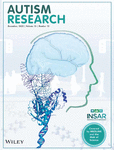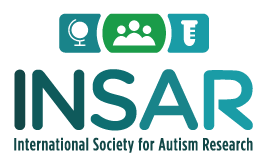Journal list menu
Export Citations
Download PDFs
ISSUE INFORMATION
COMMENTARY
Addressing current barriers to autism diagnoses through a tiered diagnostic approach involving pediatric primary care providers
- Pages: 2216-2222
- First Published: 17 October 2022
Experts in autism diagnosis are scarce and have long waitlists, leading to delays in children receiving an autism diagnosis, and subsequent autism-specific treatment. Families already interact with pediatric primary care providers (PCPs) who have broad expertise in child development; thus PCPs can minimize delays by identifying children needing autism-specific treatment before a comprehensive diagnostic evaluation. In this commentary, we discuss this tiered diagnostic approach, as well as questions that need to be answered for its successful employment.
NEUROIMAGING
Research Articles
Atypical brain network development of infants at elevated likelihood for autism spectrum disorder during the first year of life
- Pages: 2223-2237
- First Published: 04 October 2022
The brain networks of 5- and 10-month-old infants are able to support efficient communication of information in the brain. Neural networks of 5-month-old with an elevated likelihood (EL) for autism spectrum disorder (ASD) show an overgrowth in local functional connection, which may not support efficient communication between distant brain regions, while we found no such differences in 10-month-old infants with or without EL for ASD.
Association between body mass index and subcortical volume in pre-adolescent children with autism spectrum disorder: An exploratory study
- Pages: 2238-2249
- First Published: 18 October 2022
- Obesity might have a confounding influence on associations between autism spectrum disorder (ASD) and brain subcortical volumes.
- Caudate, putamen, and ventral DC volumes were differentially associated with obesity in children with ASD compared with their typically developing peers.
- BMI may need to be considered a confounder in future research examining brain subcortical volumes in ASD.
PSYCHOLOGY
Research Articles
Measures of tonic and phasic activity of the locus coeruleus—norepinephrine system in children with autism spectrum disorder: An event-related potential and pupillometry study
- Pages: 2250-2264
- First Published: 26 September 2022
The locus coeruleus (LC), a small brain stem nucleus, is the primary source of norepinephrine (NE), plays an important role in attention and arousal, and may function differently in autism spectrum disorder (ASD). Using pupillometry and event-related potentials, we found that children with ASD show increased tonic and reduced phasic LC-NE activation compared to their typically developing peers. These differences in LC-NE function may be associated with impairments in attention and arousal regulation in ASD.
Examining the relationship between cognitive inflexibility and internalizing and externalizing symptoms in autistic children and adolescents: A systematic review and meta-analysis
- Pages: 2265-2295
- First Published: 05 October 2022
This systematic review and meta-analysis explored the relationship between cognitive inflexibility (CI) and symptoms of anxiety, depression and behavioral difficulties in autistic children and adolescents. CI refers to increased rigidity and perseveration in thinking and behavior and was found to be associated with increased mental health symptoms in autistic adolescents. Addressing and targeting individual differences in CI may improve autistic children and adolescents' engagement with psychological therapy for co-occurring mental health difficulties.
Cognitive flexibility in autism: Evidence from young autistic children
- Pages: 2296-2309
- First Published: 04 October 2022
The current study aims to determine whether the Children's Color Trails Test (CCTT) and verbal (semantic and phonemic) fluency tasks are appropriate to assess cognitive flexibility in young autistic children. The overall findings showed poor performance for the autistic children in the CCTT. On the other hand, verbal fluency performance seemed to be driven by language features specific to the semantic and the phonemic fluency tasks rather than by difficulties in cognitive flexibility.
Reduced social attention in autism is magnified by perceptual load in naturalistic environments
- Pages: 2310-2323
- First Published: 07 October 2022
Real-world sensory contexts place incredible demands on selective attention. Autistic individuals report a particular challenge navigating contexts with high perceptual load, but little is known about its impact on classic, social signatures of autism. Here, we used eyetracking in immersive virtual reality to test the impact of perceptual load on social attention in naturalistic contexts. Overall, we found that group differences in social attention emerge with increasing real-world perceptual load, revealing a novel link between social and sensory processing in autism.
Bidding on the go: Links between walking, social actions, and caregiver responses in infant siblings of children with autism spectrum disorder
- Pages: 2324-2335
- First Published: 18 October 2022
The ability to walk provides infants with new opportunities for exploring the environment and interacting with people, creating powerful contexts for learning. Here we asked how infants incorporate social actions with walking, how caregivers respond to these actions, and whether differences in developmental outcomes (i.e., an autism spectrum disorder [ASD] diagnosis) shape how these events unfold. Infants with ASD coordinated social actions with walking at rates similar to their peers, and their caregivers were highly responsive to these actions, regardless of type.
Using percentiles in the interpretation of Patient-Reported Outcomes Measurement Information System scores: Guidelines for autism
- Pages: 2336-2345
- First Published: 19 October 2022
Patient-reported outcome measures are used to assess patients' health from the perspective of patients and their families, but it can be difficult to interpret scores on these measures. This study demonstrated how percentiles may help clinicians and others understand patient-reported outcome scores for children on the autism spectrum.
Mental health issues in parents of children with autism spectrum disorder: A multi-time-point study related to COVID-19 pandemic
- Pages: 2346-2358
- First Published: 20 October 2022
The psychological harm resulting from the COVID-19 pandemic is far-reaching, especially among parents of children with autism spectrum disorder (ASD). The parents of children with ASD reported poor levels of resilience, and higher levels of anxiety and depressive symptoms than parents of typically developing children during the COVID-19 crisis. Moreover, these parental mental health issues did not improve with the relaxation of COVID-19 restrictions.
EPIDEMIOLOGY
Research Articles
Associations between accelerated parental biologic age, autism spectrum disorder, social traits, and developmental and cognitive outcomes in their children
- Pages: 2359-2370
- First Published: 03 October 2022
Parental age is a risk factor for ASD; however, little is known about possible biologic aging changes that contribute to this association. We found that mothers with faster epigenetic aging and fathers with slower epigenetic aging, relative to their chronologic age, were at increased odds of having a child with ASD and/or decreased early learning, at 3 years of age. These findings suggest epigenetic aging in parents may play a role in neurodevelopment and ASD.
Association of maternal autoimmune disease and early childhood infections with offspring autism spectrum disorder: A population-based cohort study
- Pages: 2371-2380
- First Published: 03 October 2022
Inflammation during pregnancy and in early childhood may influence how a child's brain develops, increasing the risk of autism spectrum disorder (ASD). In this study, we found that having a mother with an autoimmune disease and being admitted to hospital with an infection before age two each increased a child's odds of ASD. However, children with maternal autoimmune disease and an infection did not experience any additional increase in risk from having both exposures together.
Resilience, and positive parenting in parents of children with syndromic autism and intellectual disability. Evidence from the impact of the COVID-19 pandemic on family's quality of life and parent–child relationships
- Pages: 2381-2398
- First Published: 04 October 2022
Despite challenges imposed by the COVID-19 outbreak, our study found that the quality of life reported by participating families during the first year of COVID-19 appears to be similar to ratings from a prepandemic study of families with the same conditions. The COVID-19 pandemic and related lockdowns were found to be positively associated with parent–child bonding, relational satisfaction, and increased emotional connection between parents and their children. Our findings provide evidence of families' resilience which might explain the presence of positive parental–child interactions during COVID-19.
The role of intellectual disability with autism spectrum disorder and the documented cooccurring conditions: A population-based study
- Pages: 2399-2408
- First Published: 17 October 2022
CoCs are common among children with either ASD or ID which can complicate diagnosis and treatment decisions. We compared these CoCs in children with ASD and ID and children with ASD without ID. Our results suggest that children with ASD and ID are more likely to have histories of nonspecific developmental delays and neurological disorders but were less likely to have behavioral and psychiatric conditions compared with children with ASD but not ID.
Associations between parental psychiatric disorders and autism spectrum disorder in the offspring
- Pages: 2409-2419
- First Published: 17 October 2022
Parents of autistic children are more likely to have psychiatric disorders. This might partially be due to shared genetic factors between autism and other psychiatric disorders. In addition, rearing autistic children might be stressful, leading to increased possibility of psychiatric disorders among parents. We used Taiwan's National Health Insurance claims database to identify 24,279 autistic children and 4-fold number of comparison children. The prevalence of psychiatric disorders among their parents were assessed. Specifically, we explored the temporal relationship between the timing of the diagnosis of parental psychiatric disorders and children's birth and autism diagnosis. We found parents of autistic children had higher risk of psychiatric disorders, especially for schizophrenia, depressive disorders, and adjustment disorders. Notably, we found that the risk of adjustment disorder was elevated after the child's birth. This finding indicates that the risk of parental psychiatric disorders may be attributable to not only genetic risk but also environmental factors, which are potentially modifiable. Further studies are needed to disentangle the influence of genetic and environmental factors and to determine effective intervention to reduce the risk of parental psychiatric disorders.





